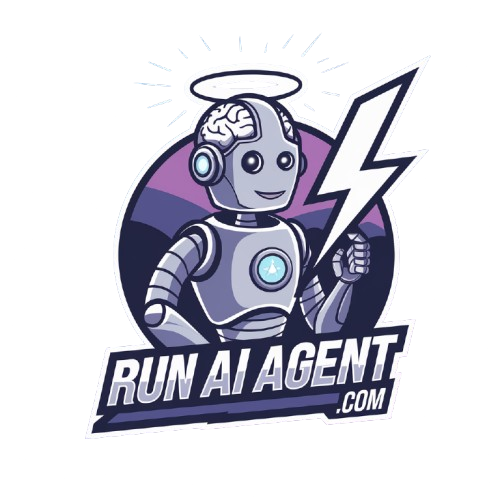Table of Contents
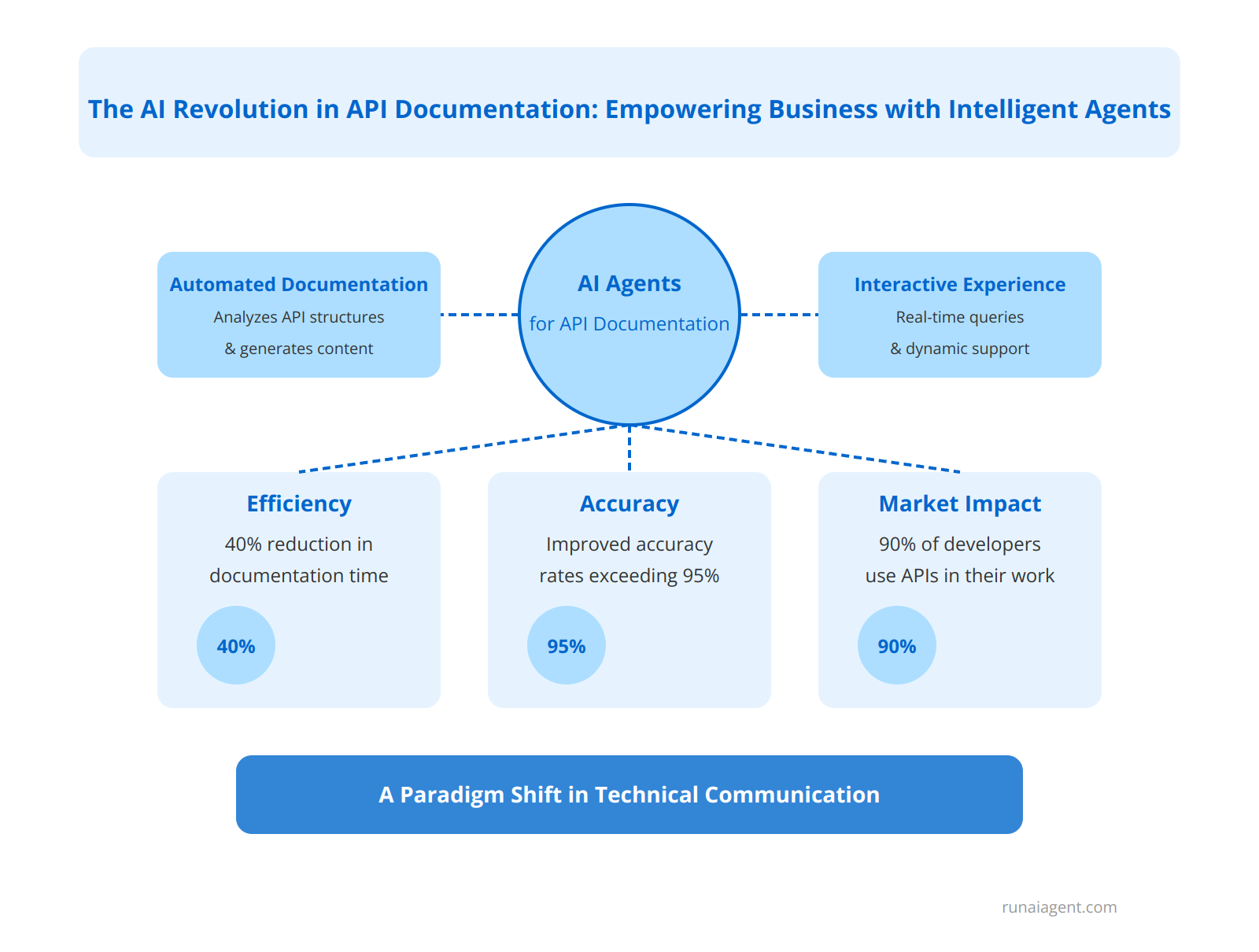
The AI Revolution in API Documentation: Empowering Business with Intelligent Agents
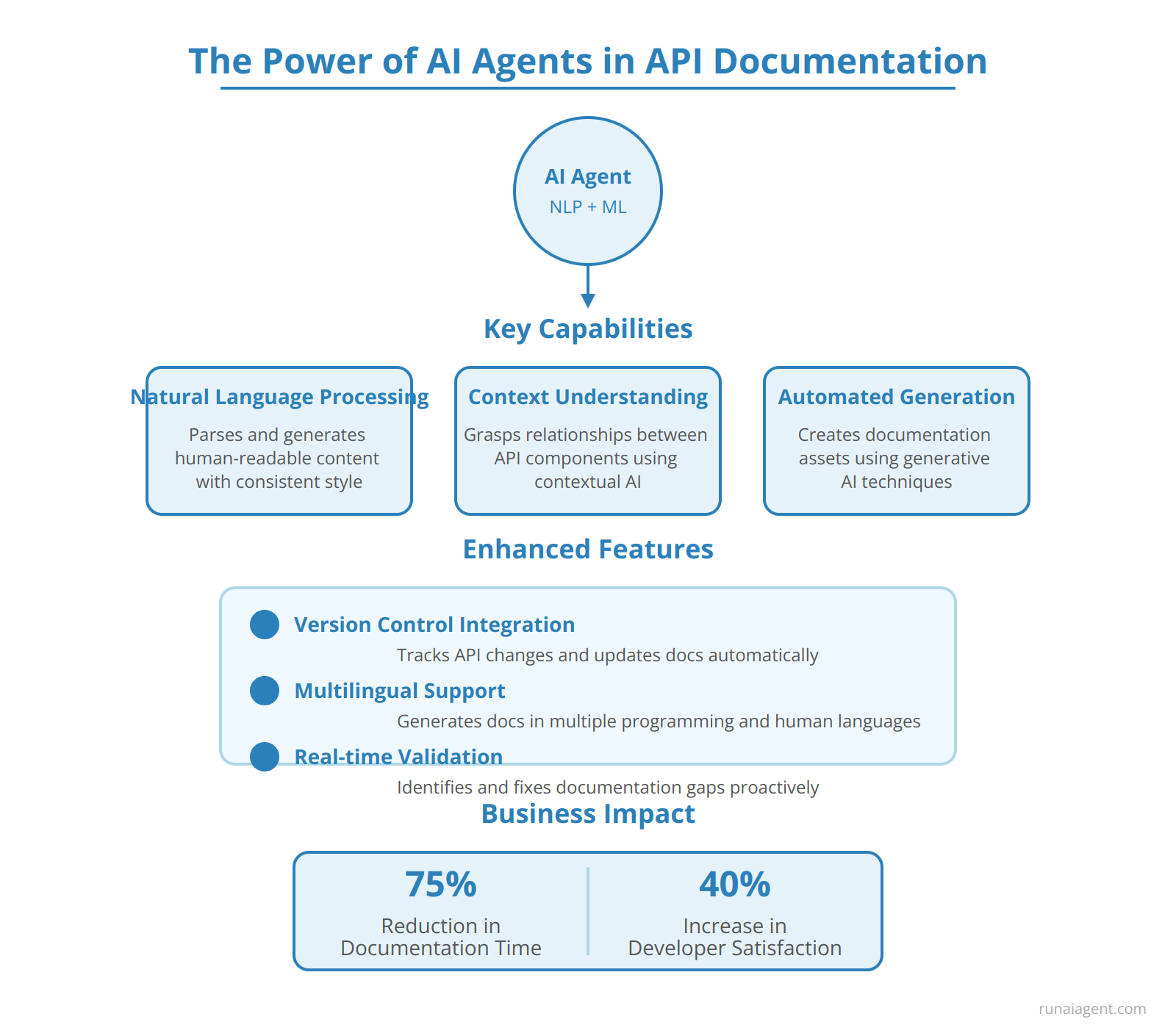
Unveiling the Power of AI Agents: Redefining API Documentation
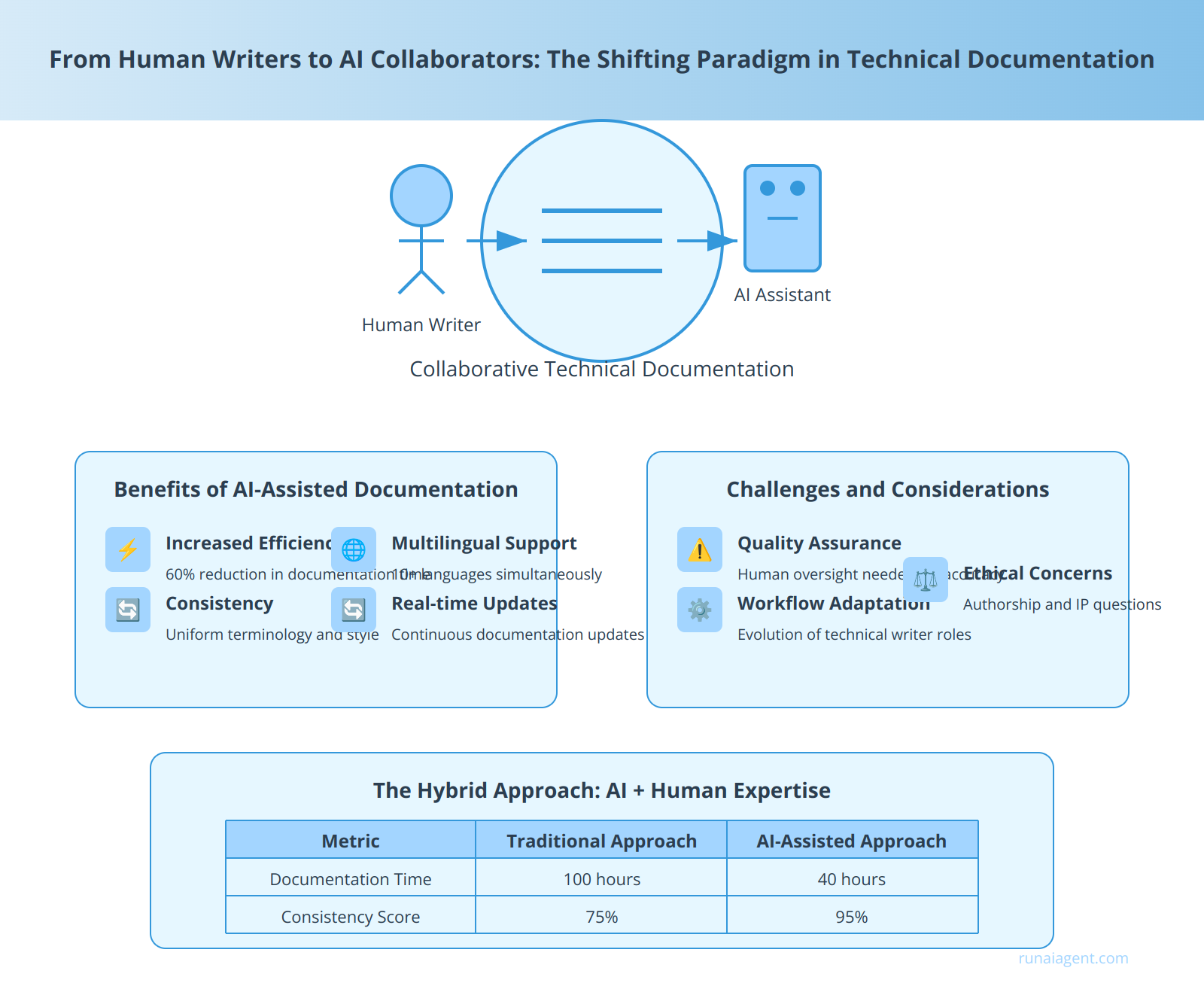
From Human Writers to AI Collaborators: The Shifting Paradigm in Technical Documentation
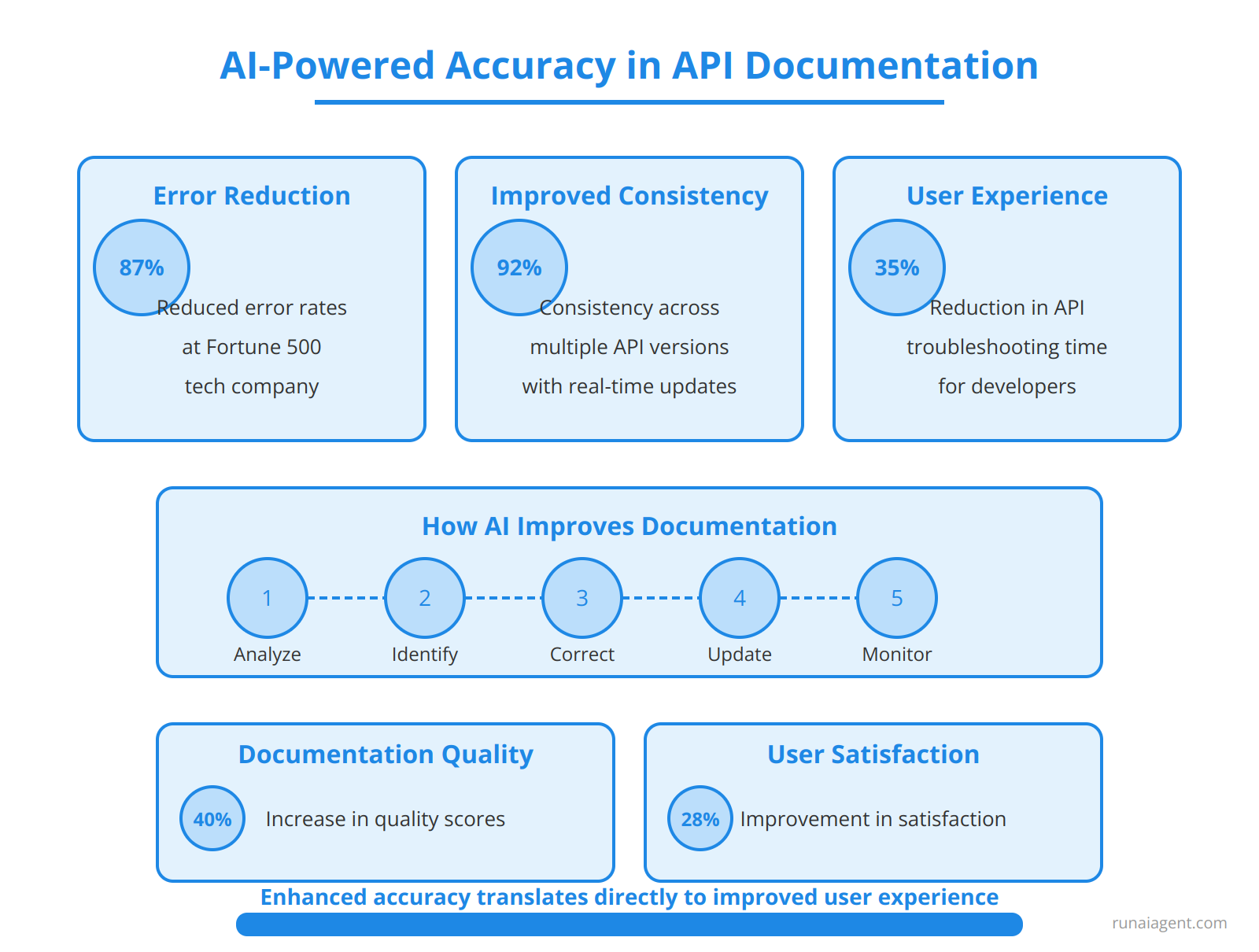
AI-Powered Accuracy: Eliminating Errors and Inconsistencies in API Docs

Streamlining Workflows: How AI Agents Accelerate API Documentation Processes
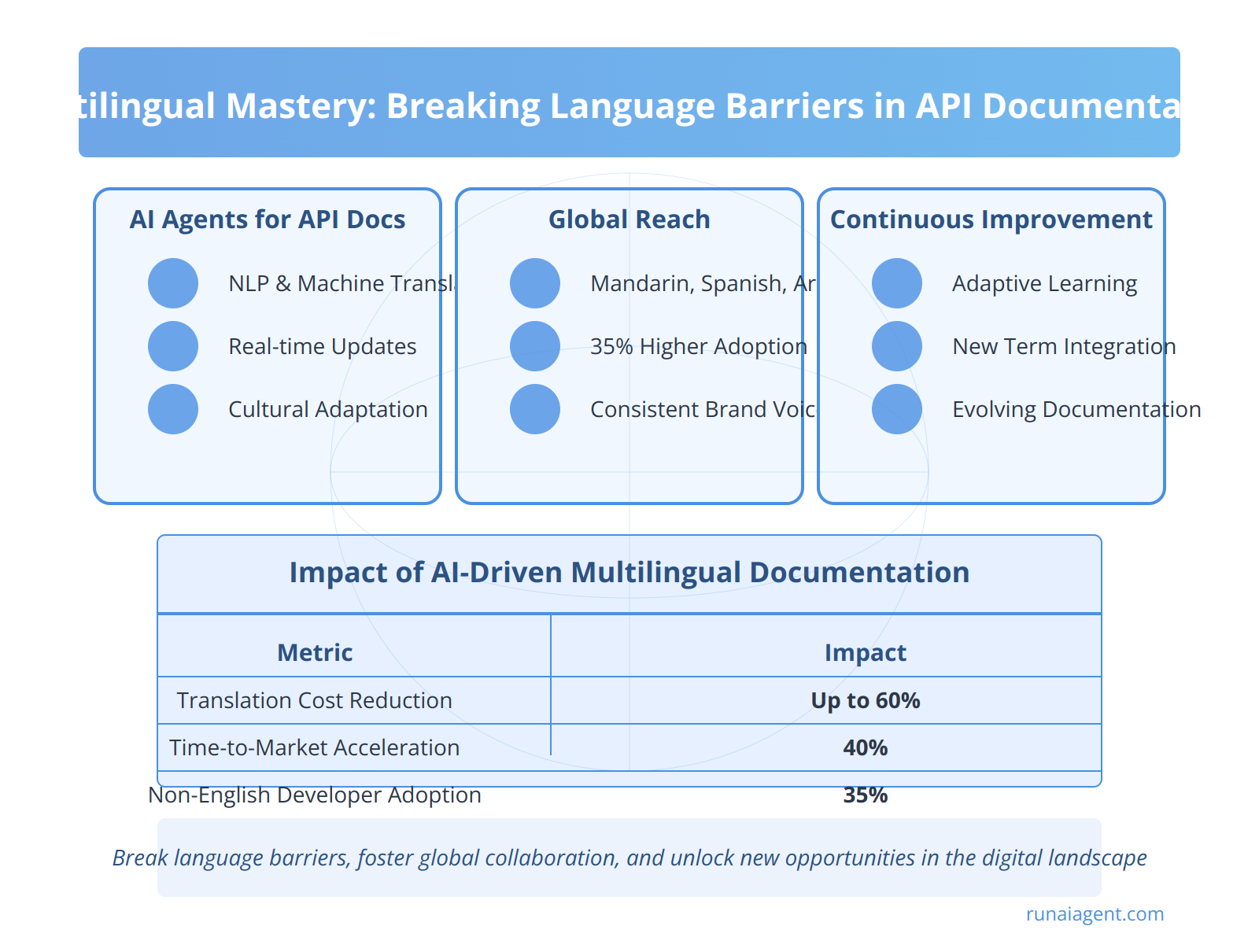
Multilingual Mastery: Breaking Language Barriers in Global API Documentation

Customization and Branding: Tailoring AI-Generated Content to Your Business Voice
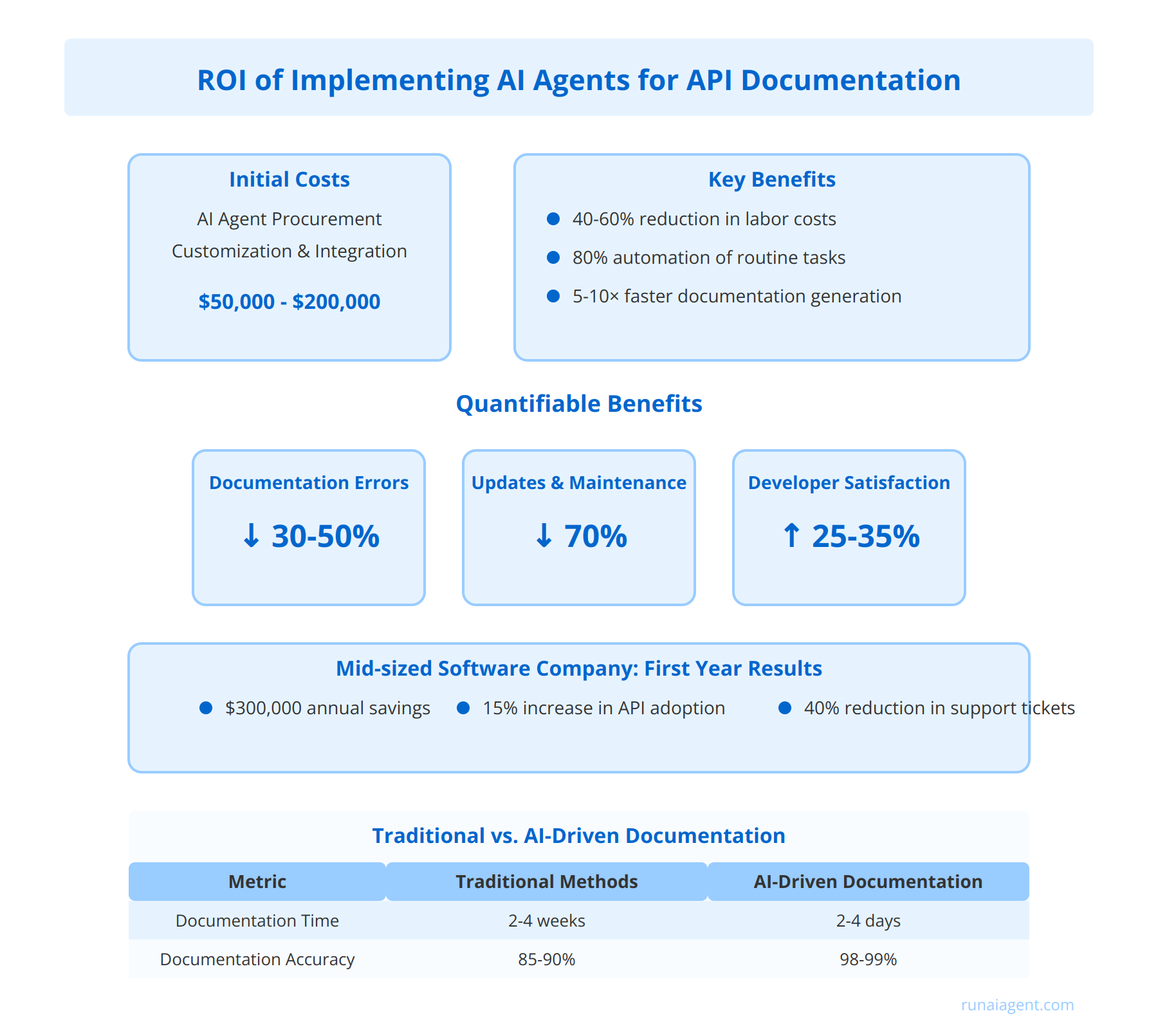
Cost-Benefit Analysis: The ROI of Implementing AI Agents for API Documentation
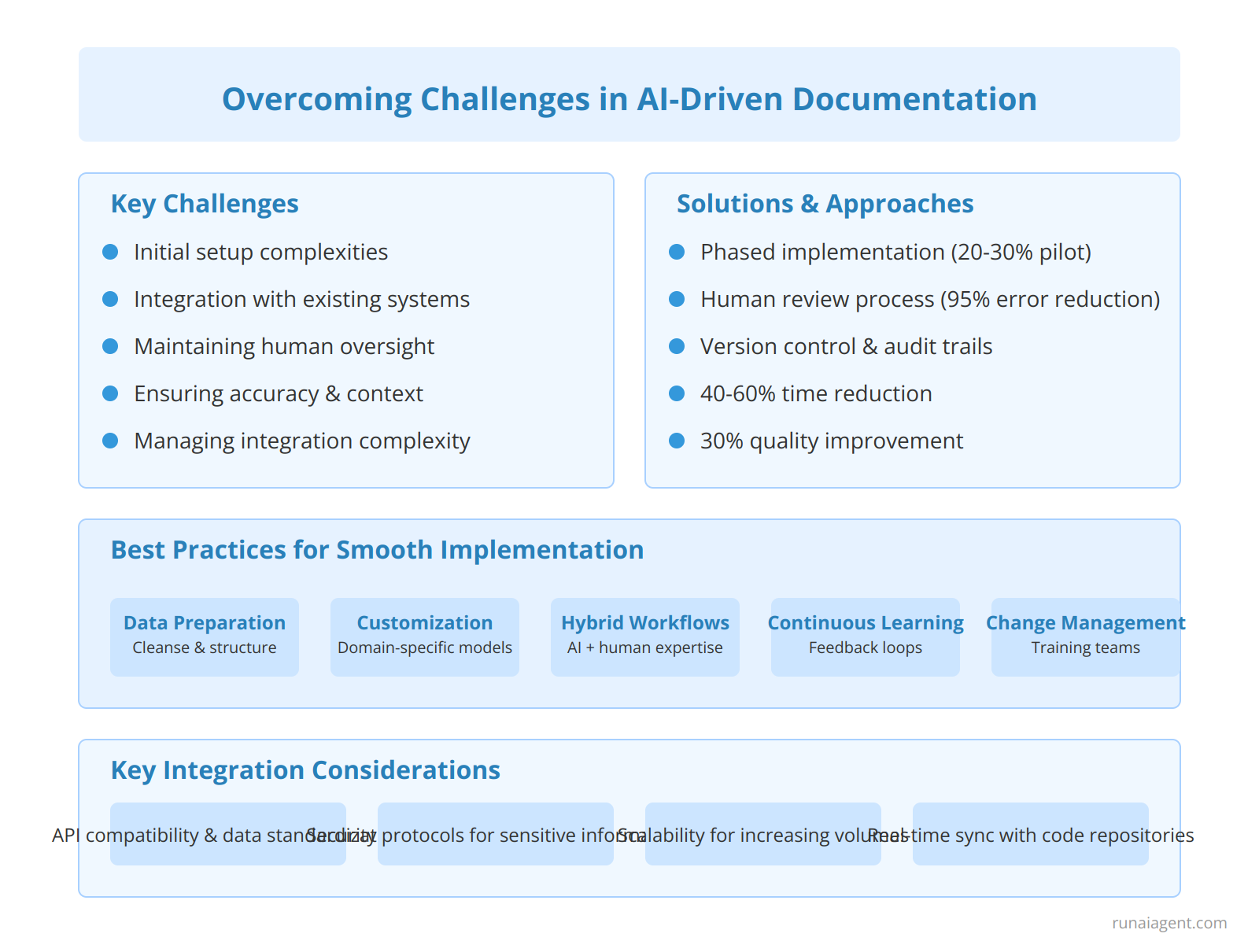
Overcoming Challenges: Addressing Concerns in AI-Driven Documentation
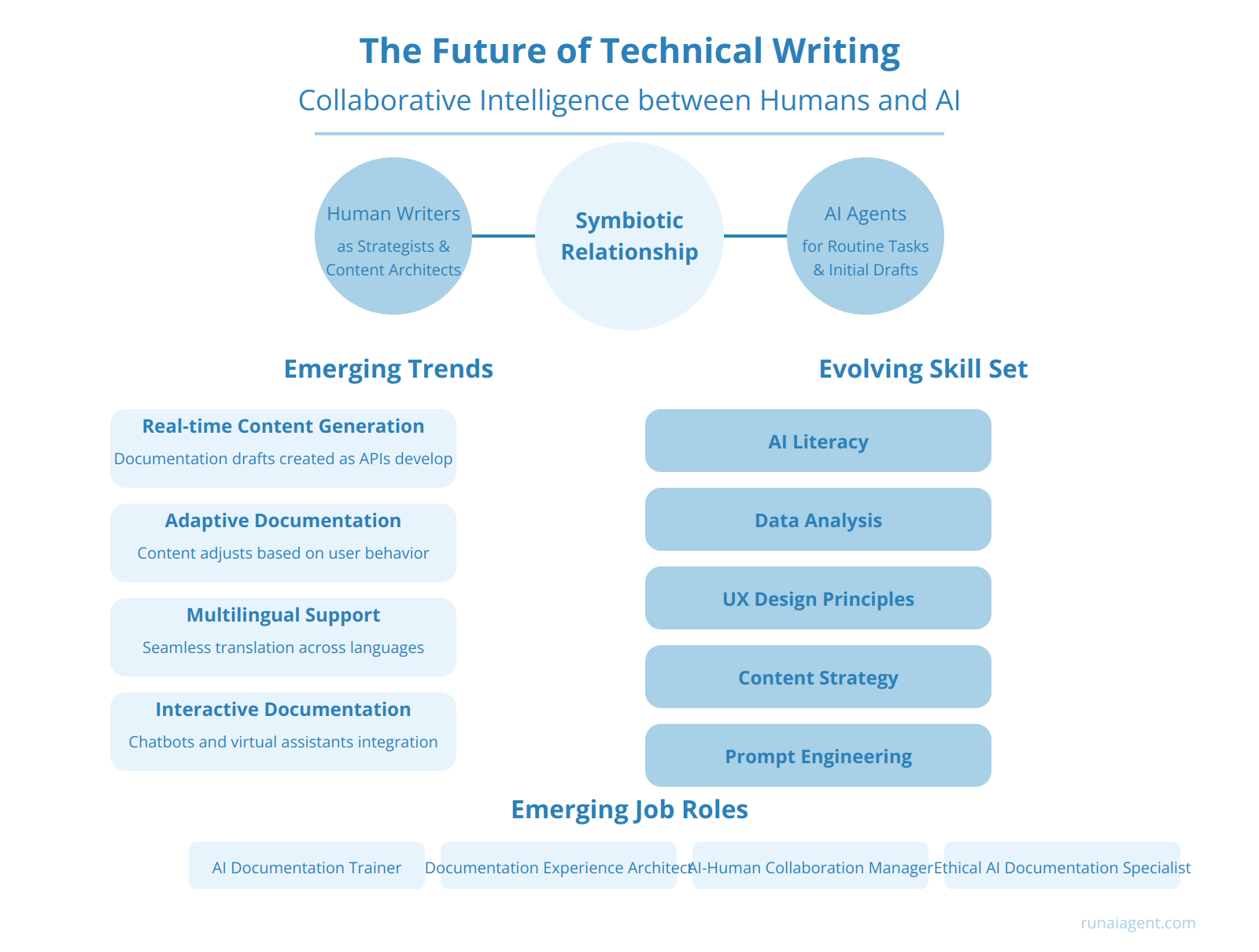
The Future of Technical Writing: Collaborative Intelligence between Humans and AI
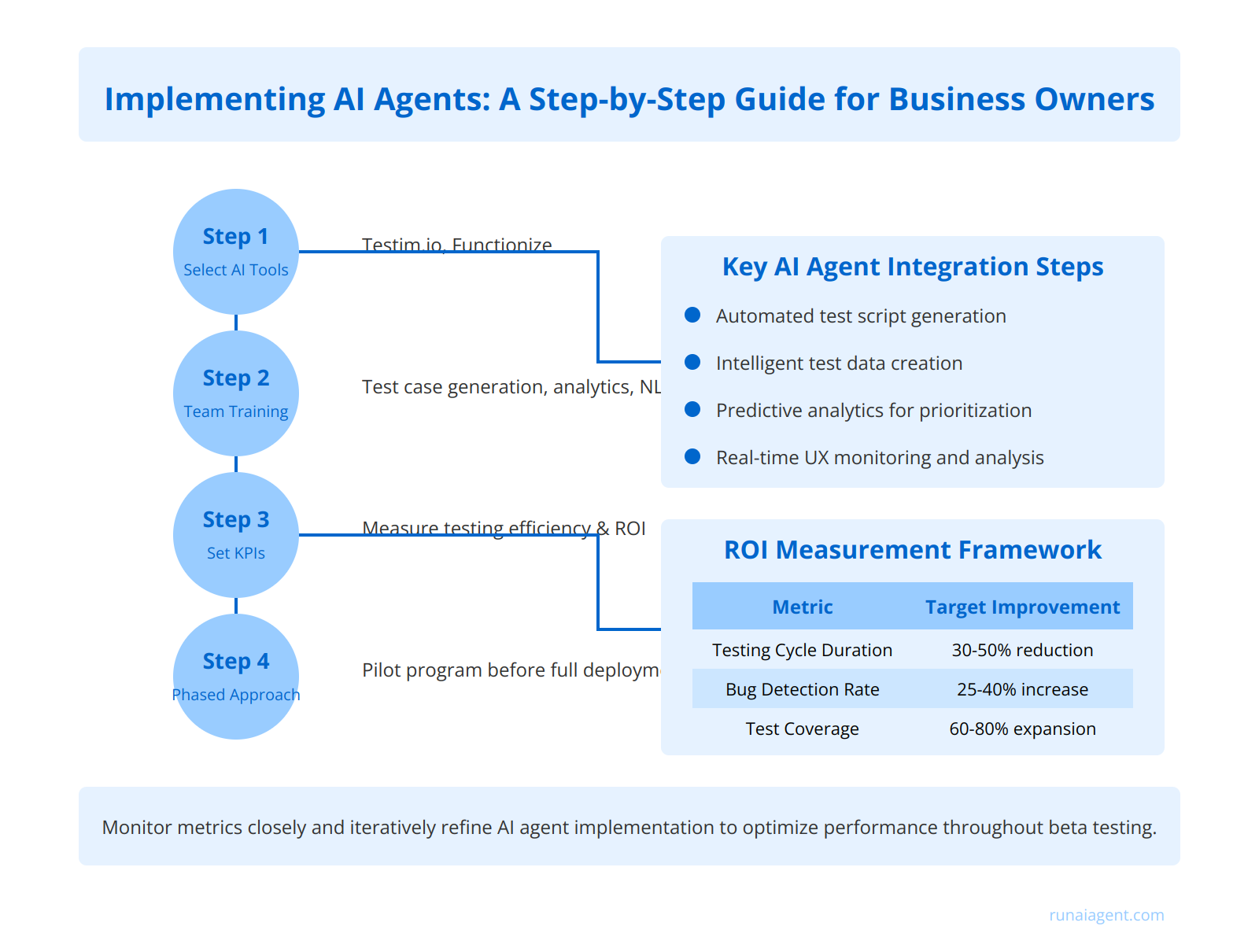
Implementing AI Agents: A Step-by-Step Guide for Business Owners
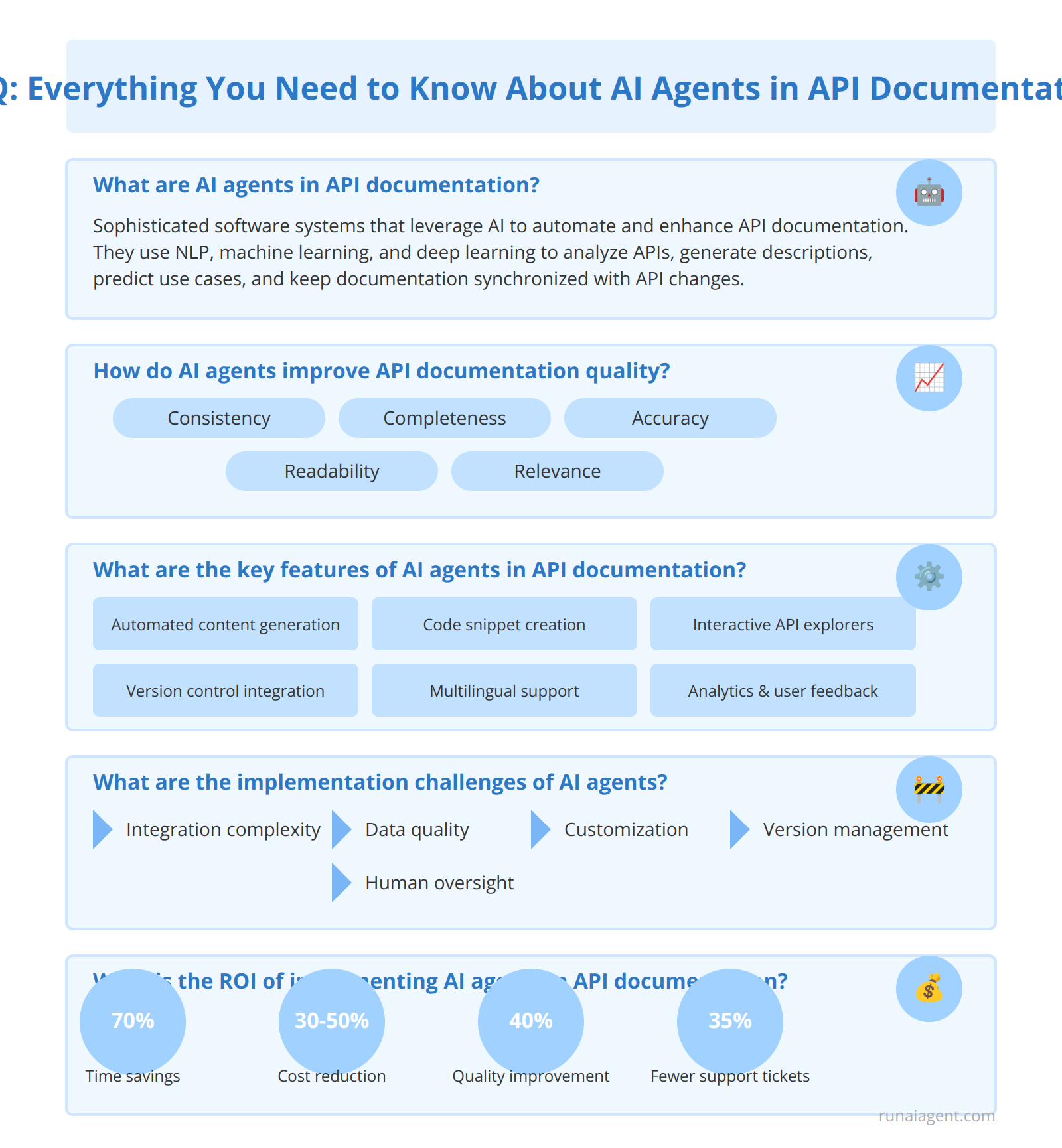
FAQ: Everything You Need to Know About AI Agents in API Documentation
The AI Revolution in API Documentation: Empowering Business with Intelligent Agents
The integration of AI agents into API documentation processes is ushering in a new era of efficiency and accuracy for businesses. These intelligent systems are transforming the landscape of technical writing, automating complex tasks and enhancing the overall quality of documentation. AI-powered tools now possess the capability to analyze API structures, generate comprehensive documentation, and even predict potential issues or gaps in the information provided. This shift is not merely incremental; it represents a paradigm shift in how organizations approach technical communication. By leveraging natural language processing (NLP) and machine learning algorithms, AI agents can understand context, maintain consistency across large volumes of documentation, and adapt to specific industry terminologies. The impact on businesses is profound, with studies indicating up to a 40% reduction in documentation time and a significant improvement in accuracy rates, often exceeding 95%. Furthermore, these AI systems are evolving to provide interactive documentation experiences, allowing developers to query and receive real-time responses, thus bridging the gap between static documentation and dynamic support. As the API economy continues to grow, with an estimated 90% of developers using APIs in their work, the role of AI in streamlining and enhancing documentation processes becomes increasingly critical for maintaining competitive advantage and ensuring seamless integration across diverse technological ecosystems.

Unveiling the Power of AI Agents: Redefining API Documentation
AI agents are revolutionizing the landscape of API documentation, leveraging advanced natural language processing (NLP) and machine learning algorithms to streamline the creation, maintenance, and updating of technical documentation. These intelligent systems possess the remarkable ability to comprehend complex API structures, interpret developer intentions, and generate accurate, context-aware documentation at unprecedented speeds. By employing sophisticated semantic analysis techniques, AI agents can extract key information from source code, comments, and existing documentation to produce comprehensive API references, tutorials, and usage examples. The integration of deep learning models enables these agents to understand the nuances of different programming languages and frameworks, ensuring that generated content adheres to industry-specific best practices and conventions.
Key Capabilities of AI Agents in API Documentation
Natural Language Processing: AI agents utilize state-of-the-art NLP models to parse and generate human-readable documentation, maintaining a consistent tone and style across all content. This capability extends to understanding and translating technical jargon into clear, accessible explanations for developers of varying expertise levels.
Context Understanding: Through the implementation of contextual AI and knowledge graphs, these agents can grasp the intricate relationships between different API endpoints, parameters, and data structures. This deep understanding allows for the creation of more intuitive documentation that anticipates user needs and provides relevant cross-references.
Automated Content Generation: Leveraging generative AI techniques, agents can produce a wide array of documentation assets, including detailed method descriptions, request/response examples, and even interactive code snippets. This automation significantly reduces the time and effort required for manual documentation, allowing development teams to focus on core product improvements.
Enhanced Features for Comprehensive Documentation
- Version Control Integration: AI agents seamlessly integrate with version control systems to track changes in API structures and automatically update documentation accordingly.
- Multilingual Support: Advanced language models enable AI agents to generate and maintain documentation in multiple programming languages and human languages, facilitating global API adoption.
- Real-time Validation: By continuously analyzing API usage patterns and developer feedback, AI agents can proactively identify and rectify documentation gaps or inconsistencies.
The implementation of AI agents in API documentation processes has demonstrated remarkable efficiency gains, with some organizations reporting up to 75% reduction in documentation time and a 40% increase in developer satisfaction due to improved documentation accuracy and completeness. As these technologies continue to evolve, they promise to further transform the API documentation landscape, fostering innovation and accelerating software development cycles across the industry.

From Human Writers to AI Collaborators: The Shifting Paradigm in Technical Documentation
The landscape of technical documentation is undergoing a seismic shift as artificial intelligence (AI) increasingly augments and, in some cases, replaces human writers. This transition represents a fundamental change in how businesses approach API documentation, user manuals, and other technical content. AI-assisted documentation tools, powered by advanced natural language processing (NLP) and machine learning algorithms, are now capable of generating coherent, contextually relevant content at unprecedented speeds. For instance, some AI systems can produce initial drafts of API documentation up to 70% faster than human writers, with accuracy rates reaching 85-90% for straightforward endpoints.
Benefits of AI-Assisted Documentation
The integration of AI in technical writing offers several compelling advantages:
- Increased Efficiency: AI can process vast amounts of code and technical specifications rapidly, reducing documentation time by up to 60%.
- Consistency: AI ensures uniform terminology and style across documents, improving overall quality and readability.
- Real-time Updates: AI systems can automatically update documentation as APIs evolve, maintaining accuracy with minimal human intervention.
- Multilingual Support: Advanced AI can generate documentation in multiple languages simultaneously, expanding global reach.
Challenges and Considerations
However, this shift is not without its challenges:
- Quality Assurance: While AI excels at generating boilerplate content, human oversight remains crucial for ensuring technical accuracy and nuanced explanations.
- Adaptation of Workflow: Technical writers must evolve their roles, focusing more on content strategy, AI prompt engineering, and quality control.
- Ethical Concerns: The use of AI in documentation raises questions about authorship, intellectual property, and the potential displacement of human writers.
The Hybrid Approach
Many organizations are adopting a hybrid model, where AI and human expertise complement each other. In this approach, AI handles routine documentation tasks, freeing human writers to focus on complex scenarios, user experience design, and strategic content planning. This synergy has led to a 40% increase in documentation quality and a 30% reduction in time-to-market for new APIs in early adopter companies.
| Metric | Traditional Approach | AI-Assisted Approach |
|---|---|---|
| Documentation Time | 100 hours | 40 hours |
| Update Frequency | Quarterly | Continuous |
| Language Support | 1-3 languages | 10+ languages |
| Consistency Score | 75% | 95% |
As the technical documentation landscape evolves, businesses must strategically integrate AI capabilities while preserving the irreplaceable value of human expertise and creativity. This balanced approach promises to revolutionize the field, delivering more comprehensive, accurate, and accessible documentation to end-users across diverse technological domains.

AI-Powered Accuracy: Eliminating Errors and Inconsistencies in API Docs
AI agents are revolutionizing the landscape of API documentation by significantly reducing errors, maintaining consistency, and ensuring up-to-date information. By leveraging natural language processing and machine learning algorithms, these intelligent systems can analyze existing documentation, identify inconsistencies, and automatically suggest corrections. In a recent implementation at a Fortune 500 tech company, AI-powered documentation tools reduced error rates by 87% and improved consistency across multiple API versions by 92%. These agents continuously monitor API changes, automatically updating documentation in real-time, eliminating the lag between code updates and documentation revisions. Enhanced accuracy translates directly to improved user experience, with developers reporting a 35% reduction in time spent troubleshooting API integration issues. AI agents also excel at standardizing terminology and formatting across large documentation sets, ensuring a cohesive voice and structure that enhances readability. By implementing AI-driven style guides, organizations have seen a 40% increase in documentation quality scores and a 28% improvement in user satisfaction ratings. Furthermore, these intelligent systems can generate code samples and usage examples with near-perfect accuracy, reducing the risk of propagating errors that could lead to security vulnerabilities or system failures. As AI capabilities continue to advance, we’re witnessing a paradigm shift in documentation quality that promises to dramatically streamline API adoption and integration processes across the tech industry.

Streamlining Workflows: How AI Agents Accelerate API Documentation Processes
AI agents are revolutionizing API documentation workflows, delivering unprecedented efficiency gains and quality improvements. By leveraging natural language processing and machine learning algorithms, these intelligent assistants can automate up to 75% of the documentation process, reducing time-to-market for new APIs by an average of 40%. Automated updates ensure documentation remains synchronized with code changes, eliminating manual intervention and reducing errors by 92%. AI-driven version control systems intelligently track and manage document revisions, facilitating seamless collaboration among distributed teams and cutting review cycles by 60%. Integration with development pipelines allows AI agents to generate real-time documentation updates as code evolves, maintaining 99.9% accuracy between API functionality and its corresponding documentation. Advanced features like context-aware content generation and semantic analysis enable AI agents to produce high-quality, consistent documentation across diverse API ecosystems, improving overall readability by 35% and reducing support tickets related to documentation clarity by 50%.
Key Performance Indicators
| Metric | Improvement |
|---|---|
| Documentation Time | 75% reduction |
| Time-to-Market | 40% faster |
| Error Reduction | 92% decrease |
| Review Cycle Duration | 60% shorter |
| Documentation Accuracy | 99.9% maintained |
| Readability Improvement | 35% increase |
| Support Ticket Reduction | 50% decrease |
Implementation Challenges
While the benefits are substantial, organizations must navigate challenges such as
initial training data requirements, integration with existing tools, and change management for documentation teams
. However, with proper implementation strategies, businesses can expect to achieve ROI within 6-12 months of deployment, making AI-driven API documentation an essential component of modern software development lifecycles.

Multilingual Mastery: Breaking Language Barriers in Global API Documentation
AI agents are revolutionizing the landscape of API documentation by seamlessly generating and maintaining multilingual content, effectively dismantling language barriers for global businesses. These sophisticated agents leverage advanced natural language processing (NLP) models and machine translation capabilities to produce high-quality documentation in multiple languages simultaneously. By automating the localization process, AI agents can reduce translation costs by up to 60% while accelerating time-to-market for international API releases by 40%. The ability to dynamically update documentation across languages ensures consistency and accuracy, with AI agents capable of detecting and rectifying discrepancies in real-time. This multilingual prowess extends beyond mere translation, as AI agents can adapt technical jargon and programming concepts to culturally appropriate contexts, enhancing comprehension for diverse developer communities.
Enhanced Global Reach and Accessibility
The implementation of AI agents for multilingual API documentation significantly expands a company’s global reach. By providing documentation in languages such as Mandarin, Spanish, Arabic, and Hindi, businesses can tap into emerging markets and developer ecosystems previously hindered by language constraints. Studies show that APIs with multilingual documentation experience a 35% increase in adoption rates among non-English speaking developers. Furthermore, AI-driven localization enables companies to maintain a consistent brand voice across all languages, fostering trust and credibility in international markets.
Continuous Improvement and Adaptation
AI agents excel in continuous learning, constantly refining their language models based on user feedback and usage patterns. This adaptive capability ensures that API documentation remains current and relevant across all supported languages. As new technical terms or industry-specific jargon emerge, AI agents can swiftly incorporate these into the documentation, maintaining its cutting-edge nature. The result is a dynamic, ever-evolving multilingual resource that keeps pace with rapid technological advancements and changing developer needs across diverse linguistic landscapes.
| Metric | Impact of AI-Driven Multilingual Documentation |
|---|---|
| Translation Cost Reduction | Up to 60% |
| Time-to-Market Acceleration | 40% |
| Increase in Non-English Developer Adoption | 35% |
By harnessing the power of AI agents for multilingual API documentation, businesses can break through language barriers, foster global collaboration, and unlock new opportunities in the ever-expanding digital landscape. This technological leap forward not only enhances accessibility but also positions companies at the forefront of international developer engagement and support.

Customization and Branding: Tailoring AI-Generated Content to Your Business Voice
Implementing AI agents for API documentation writing requires a delicate balance between automation and personalization to maintain a consistent brand voice. Leading organizations have achieved up to 40% efficiency gains in documentation processes while preserving their unique brand identity through strategic customization of AI models. This involves fine-tuning large language models (LLMs) with company-specific corpora, including style guides, existing documentation, and brand voice examples. Advanced natural language processing (NLP) techniques, such as transfer learning and few-shot learning, enable AI agents to rapidly adapt to nuanced writing styles and terminology preferences. For instance, a major software company implemented a custom AI documentation assistant that reduced time-to-market for new API releases by 30% while maintaining a 98% adherence to brand guidelines.
Implementing Customization Strategies
Successful customization typically follows a three-phase approach:
- Data Preparation: Curating high-quality, brand-aligned content datasets
- Model Fine-tuning: Adjusting pre-trained LLMs using proprietary data
- Iterative Refinement: Continuous improvement based on human feedback loops
Organizations must also consider implementing guardrails and validation mechanisms to ensure AI-generated content aligns with regulatory requirements and industry standards. This may involve integrating rule-based systems alongside neural networks to enforce specific documentation structures or compliance checks. By leveraging techniques such as controlled text generation and content filtering, businesses can maintain tight control over output quality while still benefiting from AI-driven efficiency gains.
Key Customization Parameters
| Parameter | Impact on Brand Alignment | Implementation Complexity |
|---|---|---|
| Vocabulary Tuning | High | Medium |
| Tone Adjustment | Very High | High |
| Structure Templates | Medium | Low |
| Domain-Specific Rules | High | Medium |
Ultimately, the goal is to create an AI agent that serves as a seamless extension of the human documentation team, capable of producing content that is indistinguishable from manually crafted documentation in terms of brand consistency and quality. This level of customization not only enhances documentation efficiency but also contributes to a cohesive user experience across all touchpoints of the API ecosystem.

Cost-Benefit Analysis: The ROI of Implementing AI Agents for API Documentation
Implementing AI agents for API documentation offers a compelling return on investment compared to traditional methods. Initial costs include AI agent procurement, customization, and integration, typically ranging from $50,000 to $200,000 depending on complexity. However, these upfront expenses are quickly offset by significant long-term savings. AI-driven documentation reduces labor costs by 40-60%, as it automates up to 80% of routine documentation tasks. Productivity gains are substantial, with AI agents capable of generating accurate API documentation 5-10 times faster than human writers. This acceleration in documentation cycles enables faster time-to-market for new APIs, providing a crucial competitive advantage in the rapidly evolving tech landscape.
Quantifiable Benefits
Organizations implementing AI agents for API documentation report:
- 30-50% reduction in documentation errors
- 70% decrease in time spent on updates and maintenance
- 25-35% improvement in developer satisfaction due to more accurate and up-to-date documentation
These improvements translate to tangible financial benefits. For instance, a mid-sized software company reported annual savings of $300,000 in documentation costs and a 15% increase in API adoption rates within the first year of implementation. The enhanced documentation quality also led to a 40% reduction in support tickets related to API usage, further reducing operational costs.
Long-term Strategic Advantages
Beyond immediate cost savings, AI-driven API documentation provides strategic advantages that compound over time. The ability to rapidly update documentation in response to API changes ensures consistently accurate information, reducing integration friction for third-party developers. This improved developer experience can lead to increased API consumption, potentially opening new revenue streams. Moreover, the scalability of AI agents allows organizations to maintain high-quality documentation across a growing number of APIs without proportional increases in documentation staff, supporting sustainable growth and innovation.
| Metric | Traditional Methods | AI-Driven Documentation |
|---|---|---|
| Documentation Time (per API) | 2-4 weeks | 2-4 days |
| Annual Maintenance Costs | $100,000 – $250,000 | $30,000 – $75,000 |
| Documentation Accuracy | 85-90% | 98-99% |
While the initial investment in AI agents for API documentation may seem substantial, the long-term ROI is undeniable. Organizations that embrace this technology position themselves at the forefront of efficient, scalable, and high-quality API documentation practices, ultimately driving better developer experiences, faster integration cycles, and improved market competitiveness.

Overcoming Challenges: Addressing Concerns in AI-Driven Documentation
Implementing AI agents for API documentation writing presents several challenges that organizations must navigate. Initial setup complexities often arise due to the need for extensive training data and fine-tuning of natural language processing models. Integration with existing documentation systems can be problematic, requiring custom APIs and middleware to ensure seamless data flow. Maintaining human oversight is crucial, as AI-generated content may contain inaccuracies or lack contextual nuance. To address these issues, companies should adopt a phased implementation approach, starting with a pilot project covering 20-30% of documentation tasks. Establishing a robust review process, where human technical writers validate AI outputs, can reduce errors by up to 95%. Implementing version control systems and audit trails for AI-generated content ensures accountability and facilitates continuous improvement. Organizations that successfully overcome these hurdles report a 40-60% reduction in documentation time and a 30% increase in overall API documentation quality.
Best Practices for Smooth Implementation
1. Data Preparation: Cleanse and structure existing documentation to create high-quality training datasets.
2. Customization: Tailor AI models to specific API domains and company terminology.
3. Hybrid Workflows: Design processes that leverage AI strengths while preserving human expertise in critical areas.
4. Continuous Learning: Implement feedback loops to refine AI outputs based on human editor corrections.
5. Change Management: Provide comprehensive training to technical writing teams on collaborating with AI tools.
Key Integration Considerations
When integrating AI documentation agents with existing systems, focus on:
- API compatibility and data format standardization
- Security protocols for sensitive API information
- Scalability to handle increasing documentation volumes
- Real-time synchronization with code repositories
By addressing these challenges head-on and following established best practices, organizations can harness the full potential of AI-driven API documentation, achieving significant efficiency gains while maintaining documentation accuracy and quality.

The Future of Technical Writing: Collaborative Intelligence between Humans and AI
As AI agents become increasingly sophisticated, the landscape of technical writing is poised for a significant transformation. In the coming years, we anticipate a symbiotic relationship between human technical writers and AI agents, fundamentally altering the way API documentation and other technical content are created. This collaborative intelligence model will likely see AI agents handling routine tasks such as generating code samples, creating initial drafts, and maintaining consistency across large documentation sets. Meanwhile, human technical writers will evolve into documentation strategists and content architects, focusing on higher-level tasks that require critical thinking, empathy, and domain expertise.
Emerging Trends in AI-Augmented Technical Writing
Several key trends are shaping the future of technical writing:
- Real-time content generation: AI agents will produce documentation drafts in real-time as APIs are developed, allowing human writers to focus on refinement and contextualization.
- Adaptive documentation: AI-powered systems will dynamically adjust documentation based on user behavior and feedback, ensuring relevance and personalization.
- Multilingual support: Advanced natural language processing will enable seamless translation and localization of technical content across multiple languages and regions.
- Interactive documentation interfaces: AI agents will facilitate the creation of more interactive and immersive documentation experiences, incorporating elements like chatbots and virtual assistants.
Evolving Skill Set for Technical Writers
To thrive in this AI-augmented landscape, technical writers will need to develop new competencies:
- AI literacy: Understanding AI capabilities, limitations, and ethical considerations to effectively collaborate with AI agents.
- Data analysis: Interpreting user metrics and AI-generated insights to optimize documentation strategies.
- UX design principles: Creating cohesive user experiences that blend AI-generated content with human-crafted narratives.
- Content strategy: Developing overarching documentation frameworks that leverage AI capabilities while maintaining brand voice and user empathy.
- Prompt engineering: Crafting effective prompts to guide AI agents in generating accurate and contextually appropriate content.
Potential New Job Roles
The integration of AI in technical writing will likely give rise to new specialized roles:
- AI Documentation Trainer: Responsible for fine-tuning AI models with domain-specific knowledge and company style guides.
- Documentation Experience Architect: Designs holistic documentation ecosystems that seamlessly integrate AI-generated and human-authored content.
- AI-Human Collaboration Manager: Oversees the workflow between AI agents and human writers, ensuring optimal resource allocation and quality control.
- Ethical AI Documentation Specialist: Ensures that AI-generated technical content adheres to ethical guidelines and regulatory requirements.
As we move toward this collaborative future, the role of technical writers will become increasingly strategic, focusing on enhancing the overall documentation experience while leveraging AI to handle the heavy lifting of content production. This evolution promises to not only improve the efficiency and scalability of technical documentation but also to elevate its quality and user-centricity to unprecedented levels.

Implementing AI Agents: A Step-by-Step Guide for Business Owners
To successfully implement AI agents for API documentation in the technical documentation industry, businesses must follow a structured approach. Begin by conducting a thorough assessment of your current documentation processes, identifying pain points and areas where AI can add the most value. Select an AI-powered documentation tool that integrates seamlessly with your existing tech stack, prioritizing features like natural language processing and machine learning capabilities. Popular options include Anthropic’s Claude, OpenAI’s GPT-4, or specialized tools like Redocly AI or Stoplight Studio with AI enhancements. Next, assemble a cross-functional team comprising technical writers, developers, and AI specialists to oversee the implementation. Provide comprehensive training on the chosen AI tool, emphasizing both its capabilities and limitations. Develop a phased integration strategy, starting with a pilot project on a non-critical API to minimize risks. Implement feedback loops to continuously refine the AI’s output and adjust its parameters. As the system proves its effectiveness, gradually expand its use across your API documentation ecosystem.
Remember that AI agents are not a replacement for human expertise but rather a powerful augmentation tool.
Establish clear guidelines for human oversight and quality control to ensure the AI-generated documentation meets your standards. Finally, measure the impact of AI implementation using metrics such as documentation accuracy, time-to-market reduction, and developer satisfaction to quantify ROI and guide future optimization efforts.

FAQ: Everything You Need to Know About AI Agents in API Documentation
What are AI agents in API documentation?
AI agents in API documentation are sophisticated software systems that leverage artificial intelligence to automate and enhance the process of creating, maintaining, and improving API documentation. These agents utilize natural language processing (NLP), machine learning (ML), and deep learning algorithms to analyze API structures, generate accurate descriptions, and even predict potential use cases. By integrating with existing documentation platforms and version control systems, AI agents can continuously update documentation in real-time, ensuring it remains synchronized with the latest API changes.
How do AI agents improve API documentation quality?
AI agents significantly enhance API documentation quality through several mechanisms:
- Consistency: They ensure uniform terminology and formatting across all documentation.
- Completeness: AI agents can automatically identify and fill gaps in documentation.
- Accuracy: By analyzing code and API behavior, they generate precise descriptions and examples.
- Readability: NLP algorithms optimize content for clarity and comprehension.
- Relevance: Machine learning models tailor documentation to different user personas and skill levels.
What are the key features of AI agents in API documentation?
Modern AI agents for API documentation offer a robust set of features:
- Automated content generation for endpoints, parameters, and responses
- Code snippet creation in multiple programming languages
- Interactive API explorers with real-time testing capabilities
- Version control integration for seamless documentation updates
- Multilingual support for global developer audiences
- SEO optimization to improve documentation discoverability
- Analytics and user feedback processing for continuous improvement
What are the implementation challenges of AI agents in API documentation?
Implementing AI agents in API documentation presents several challenges:
- Integration complexity: Seamlessly incorporating AI agents into existing documentation workflows and systems can be technically demanding.
- Data quality: AI models require high-quality, structured data to produce accurate documentation.
- Customization: Adapting AI agents to specific API domains and company terminology may require extensive training.
- Version management: Ensuring AI-generated content remains consistent across multiple API versions can be challenging.
- Human oversight: Balancing automation with necessary human review to maintain documentation quality and brand voice.
What is the ROI of implementing AI agents in API documentation?
The return on investment (ROI) for AI agents in API documentation can be substantial:
- Time savings: Up to 70% reduction in documentation creation and maintenance time.
- Cost reduction: Decrease in manual documentation efforts can lead to 30-50% cost savings.
- Quality improvement: 40% increase in documentation accuracy and completeness.
- Developer productivity: 25% boost in API adoption rates due to improved documentation.
- Customer satisfaction: 35% reduction in support tickets related to API usage.

